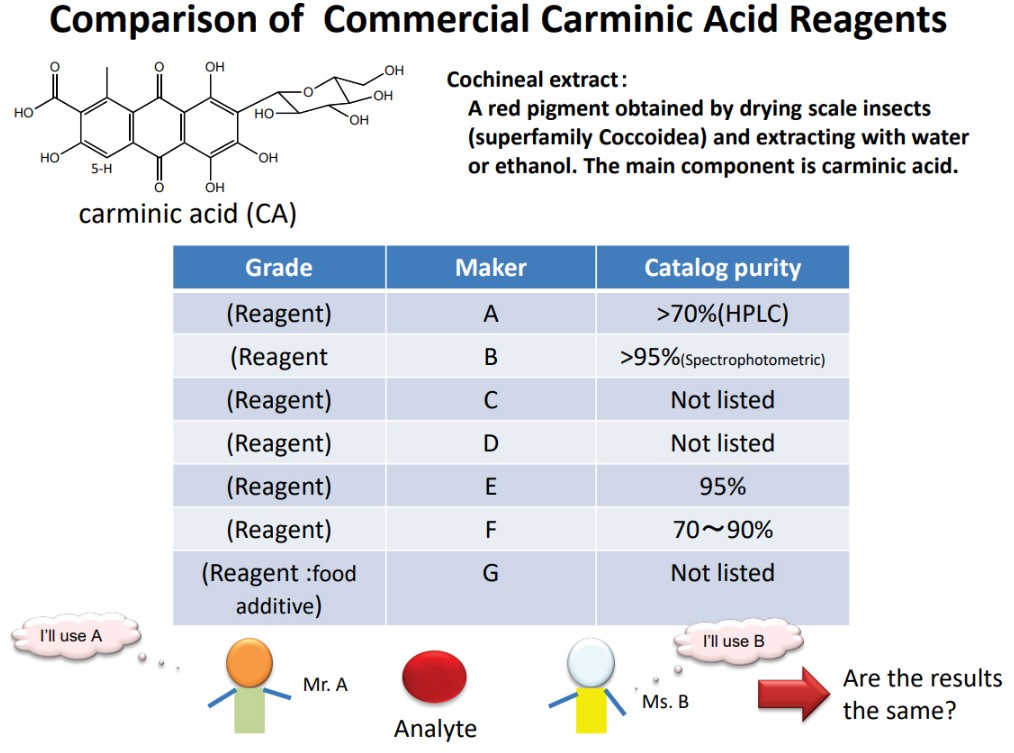Is Quantitative NMR Changing Quantitative Analysis (1)?
Issue 6
The topic for the 6th issue is “Is qNMR changing quantitative analysis?”
How is quantitative NMR related to ensuring reliability? This is an important topic for understanding qNMR, so the discussion will be divided into 2 parts and continued in the next issue.Quantitative analysis methods that are versatile and widely used are the chromatographic methods, like HPLC and GC.
Chromatography systems are indispensable instruments for quality control in various fields, such as pharmaceuticals, foods and industrial products. The 2nd issue of this e-zine [Chromatographic methods of quantification and NMR quantification] introduced the differences between these measurement methods. This issue and the next will discuss the concepts for the next-generation quantitative analysis methods, which take advantage of the characteristics of both chromatography and NMR, and the potential of qNMR to change the status quo in quantitative analysis.
Standard Products and Reference Materials
Chromatography methods require a kind of “yardstick” that provides the basis for comparison. These “yardsticks” are called “standards” or “reference materials”, and must be identical to the target substance that is being measured. Naturally, the quality of these “yardsticks” is extremely important. The materials that are called “National Standard Materials” are assessed as being SI-traceable; so, if this grade of “yardstick” is used, the results obtained with chromatography will be regarded as being highly reliable.
However, the evaluation and certification required to turn national standard materials into products is very time-consuming and costly. As a result, although there are an infinite number of substances that we may want to measure, there is no guarantee that a “yardstick” of the quality we require will be available for every analyte.1)
The Case of Carminic Acid
Carminic acid is an organic compound derived from natural sources, and used in pigments for a variety of products. HPLC is used to measure the amount of carminic acid that is contained in the actual products. However, there is no National Standard Material for carminic acid. Therefore, commercial reagents are used as the quantitative reference (i.e. the “yardstick”). There are multiple reagent makers selling this kind of reagent, so we can perform HPLC analysis using these reagents. It is possible to check the quality of the reagents by referring to the labels and information provided with the reagent product, and a variety of methods are used to perform the assessment. Reagent makers have strict quality control procedures, so basically, there should be no problem; but, what about the following case? Suppose there is an analytical sample that is analyzed using HPLC at multiple facilities. Some facilities use product A for the analysis and others use product B. Will the results be comparable?

This is an issue that actually concerns many of the people performing the analyses, but there has not been much progress on the problem of Standard and Reference Material availability. qNMR is a way to solve this problem. Continued in the next issue.
1) Reagent makers use various names, such as “Standards” or “Reference Materials”, but only substances that have demonstrated SI-traceability can be called National Standard Materials or Primary Standards (other terms may also be used, such as Certified Reference Material (CRM), depending on the maker and applicable regulation).
Are you a medical professional or personnel engaged in medical care?
No
Please be reminded that these pages are not intended to provide the general public with information about the products.
